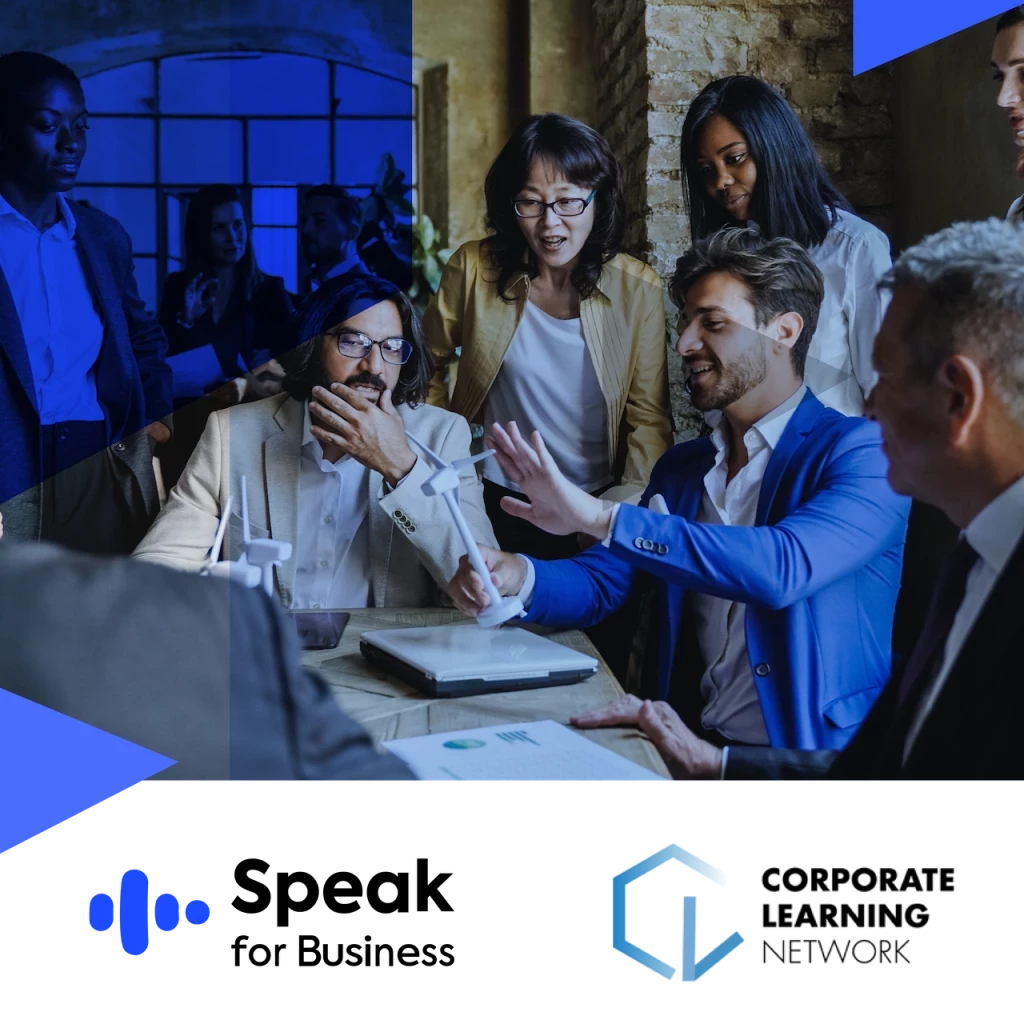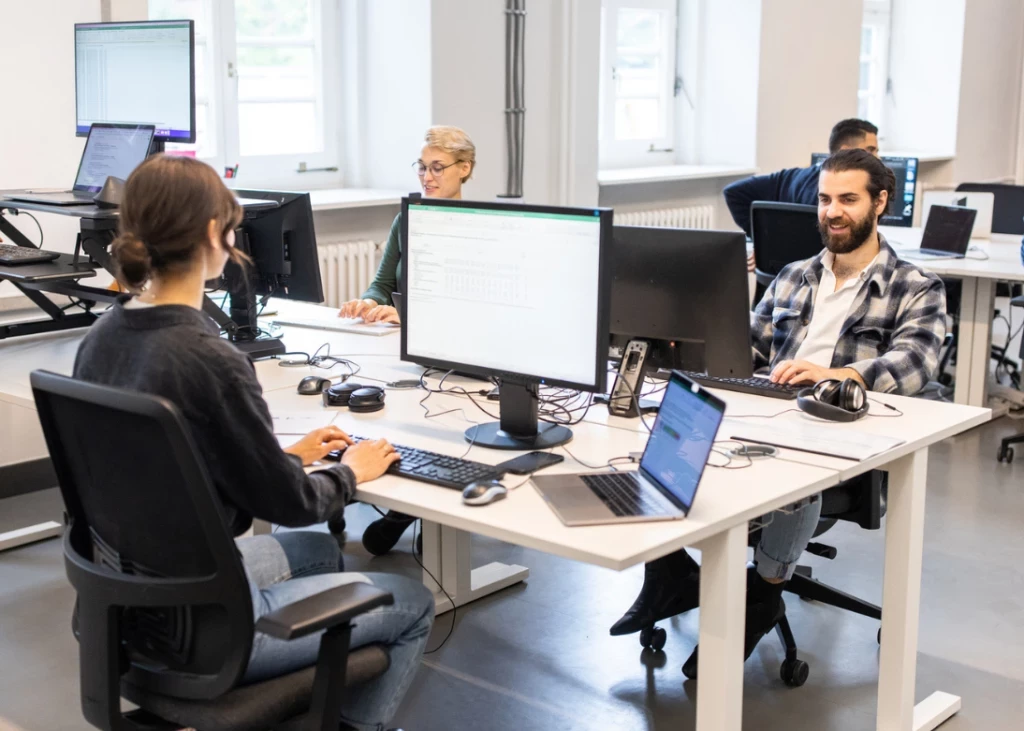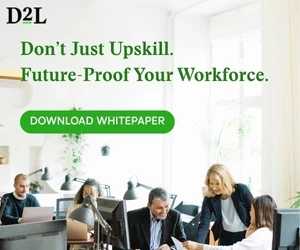CLN’s 2023 LAB — The Learner Actualization Blueprint
Add bookmark
L&D is undergoing a change of massive proportions. What worked for employees ten, five or even three years ago feels distinctly antiquated, stale and ineffective today. There are pivotal, global transformations at play that contribute directly to this shift: for starters, the colossal impact of the Covid-19 pandemic on modern society has transformed how and where people work, the way they socialize and the format and type of information they consume. Even in the pre-2020 world, new generations were gaining a stronger foothold in the workforce, thereby forcing organizations into an avant-garde mindset in order to keep up: modern jobs must provide a sense of purpose and growth in order to retain and attract top talent.
The economic turmoil that came with the beginning of 2023 is also starting to alter L&D in significant ways: frequent layoffs, resignations and restructuring means that the remaining company staff must efficiently and quickly absorb the skills and competencies lost with eliminated jobs. In order to guide this drastic organizational change, efficient and engaging upskilling and reskilling programs are essential. Budget cuts are also a calamity for L&D departments if they cannot demonstrate ROI on L&D programs clearly and concisely to key business stakeholders.
Global societal trends compounded by recent events are transforming the future or work, knowledge and corporate priorities, and L&D must keep up. This is why, based on extensive community survey responses, executive interviews and investment profiles, CLN CEO Max Ribitzky and Senior Analyst Megan Kashtan have composed a framework through which L&D leaders can design, benchmark and execute their organizational strategy to optimize the relevance, excellence and resilience of their learning experience and overall impact on the business.
The Learner Actualization Blueprint
 Each one of the three 2023 LAB sections focuses on a critical component of the business, L&D org and learner:
Each one of the three 2023 LAB sections focuses on a critical component of the business, L&D org and learner:
- Intelligent talent mobility enables change management and future-proofing
This section features a dozen questions designed to help L&D leaders assess their current state of Learner Actualization, identify gaps and opportunities and answer an overarching question:
How does L&D help your organization maintain efficiency and productivity through intelligent talent mobility throughout difficult times of change?
- Accessible Upskilling/reskilling to meet learners where they are
This section features a dozen questions designed to help L&D leaders assess their current state of Learner Actualization, identify gaps and opportunities and answer an overarching question:
Do learners have access to effective and engaging content accessible through various technological modalities?
- Business Alignment to align to overarching corporate goals and demonstrate ROI
This framework features a dozen questions* designed to help L&D leaders assess their current state of Learner Actualization, identify gaps and opportunities and answer an overarching question:
How do you align with the overall business objectives, measure L&D initiatives and demonstrate their value to the organization at large?
*Note: Keep an eye out for Part II of this article which will dive deeper into the questions for each LAB Assessment section.
The following is an overview of the parameters and significance of each section.
A Modern Framework for Intelligent Mobility/Change Management
“Jobs, positions, hierarchies, leveling — all those things are deconstructing in order to make companies more agile.” - Kason Morris, Head of Global Skills, Talent Marketplace, and Internal Mobility, Allstate
The workplaces of the past were rigid, with most employees adhering to a specific role and skillset. Employees sharpened and grew the same capabilities throughout their careers. Today, however, the paradigm of linear career growth is largely extinct. In the modern workplace, career paths are flexible, which encourages individuals to work in diverse roles throughout their lives. This phenomenon is monumental for companies, as it means there is a new method by which to both retain and strengthen organizational effectiveness and productivity: internal talent mobility.
There is serious interest amongst L&D professionals in strengthening their organizations’ internal mobility programs. A December ‘22 CLN survey that examined the opinions of L&D leaders on the future of work found that 66.35% of participants were focused on developing career paths and creating opportunities for internal mobility in order to ensure a relevant and impactful L&D strategy.
The economic events of early 2023 and the resulting workplace disruptions have, of course, added a new perspective to the prospect of internal mobility. In fact, another December ’22 CLN survey on learning priorities for 2023 found that 61.11% of respondents rated organizational change as one of their top challenges. Some L&D professionals may think that with major layoffs and even the burden of proving L&D’s value to the organization during uncertain times, internal mobility is of low priority. However, the main principle that underlies a great talent mobility strategy, efficient and effective upskilling and reskilling to allow employees to take on new roles, remains as relevant as ever during times of economic uncertainty.
Kason Morris, Head of Global Skills, Talent Marketplace, and Internal Mobility at Allstate, believes putting in place a strong talent mobility strategy can mitigate the effects of a difficult economy on an organization. He says “Few companies have really robust, mature, internal talent and mobility strategies in place because a lot of things tend to be very siloed and very manual. But those that have started on this trend — I would argue that they probably deal with less attrition and fewer layoffs because they’re able to move people into areas where they are needed.” When budgets are slashed and positions eliminated, willing employees with transferable skills can shift to areas of the organization that aren’t being downsized. Internal mobility is also a financially advantageous strategy during recruitment. “Instead of spending dollars and effort on sourcing talent through traditional engines like recruitment, you can now leverage the latent capacity and expertise of the labor market that you already have within your organization,” Morris says.
Talent Mobility in a Variable Skills Marketplace
The technical skills needed to succeed in the workplace continue to evolve extremely swiftly in today’s shifting technology landscape, and helping employees stay on top of these trends is critical. However, honing those less concrete yet universally applicable core competencies such as empathy, critical thinking, creativity, communication and leadership is equally important. Corporate Learning Network has reframed these “soft skills” as “essential skills” due to their central relevance in the workplace, and will refer to them as such for the remainder of this article.
A particular benefit of essential skills is that they offer employees and organizations alike the benefit of increased adaptability, which is of the utmost importance during times of economic uncertainty. Of course, technical skills are extremely important, but many differ from role to role. However, with a solid repertoire of essential skills, employees are better able to quickly gain the specific technical skills needed for new roles within the company.
Obviously, technical competencies are still crucial. This is why, Morris says, we should be looking at durable vs. perishable skills. Regardless of the technical or humanistic function of the skill, a great internal talent mobility program looks at which skills will strengthen the employee in the long term and focuses on sharpening those skills.
Engaging the Learner With Accessible Upskilling
“I think it's really important that whatever you're doing with [learning content], it has to have a consumer-grade experience.” -Christopher Lind, Vice President and Chief Learning Officer, ChenMed
Accessible upskilling perfectly complements intelligent internal mobility as a driver of growth in the modern workplace. It is fundamental and indispensable to supporting resilience in individuals and in the workforce at large, and it allows learning to align with every employee’s unique needs. Accessible upskilling also contributes greatly to employee engagement, which CLN research found to be a key L&D area of focus for 2023. On CLN’s February ’23 survey on learning and development priorities of 2023, 75.00% of respondents noted that by August ’23, they expect to be focused on strengthening employee engagement. Out of 15 potential topics of focus by August, strengthening employee engagement scored the highest.
With an accessible upskilling strategy that boosts employee engagement by facilitating an exceptional user experience, organizations will find it significantly easier to keep pace during learning’s momentous shift and to contend with economic uncertainty. The tremendous potential of accessible upskilling as a catalyst for increased engagement led CLN analysts to include it as the second piece of our Learner Actualization Blueprint.
But how can L&D departments ensure accessible and engaging learning programs? The answer continues to evolve, but it starts with viewing learners as consumers. According to Christopher Lind, Vice President and Chief Learning Officer at ChenMed, learning should be delivered as a consumer experience, customizable to the needs of each user. Even when learners aren’t buying a learning product, they’re fueling its success or causing its downfall by engaging with it or overlooking it. If L&D departments can sell employees on their learning content, everyone benefits, including both the learner and the organization.
This means that when facilitating learning, delivering a seamless user experience is key. For instance, if the organization has the capacity to install learning content that users can choose to either read, watch on video, or listen to, and on any device (computer, phone, tablet and etc.) it creates an optimal environment for learning. Employees should be able to choose content based on their own learning styles.
When it comes to learning, consumers also need content that delivers its value efficiently, rather than spending time that they don’t have to do training programs that aren’t proven to increase success. Recent technological trends in learning, such as gamification, AI, VR/AR and simulations are often key elements of dynamic learning content. These methodologies, when used effectively, provide for much more immersive experiences that engage the learner immediately and decrease the amount of time needed to pick up new skills or knowledge.
The popular method of learning in the flow of work is a way to reach employees during a busy workday without disrupting their concentration, which is key to increasing engagement. Utilizing principles of microlearning to deliver to employees bite-sized pieces of information exactly when needed is one effective method of implementing learning in the flow of work. This learning content is most user-friendly when delivered through platforms that employees already use on a daily basis at work, such as Microsoft Teams, Slack, email and text.
There is another significant piece of the puzzle when it comes to ensuring an accessible learning experience, and it isn’t related to learning technology. Instead, Lind says, it’s about the holistic learning experience. This includes instances in which it is necessary to pull employees out of the flow of work in order to cognitively analyze and reflect on learning experiences with colleagues and managers. Including this time to discuss learning with coworkers increases engagement by adding a social and collaborative aspect to the learning experience, rather than just interacting solely with different technological devices.
Many skills, and particularly those skills that fall under the category of essential skills, are almost impossible to learn without real-time interaction. For instance, Lind says, if managers are learning how to have clearer and more communicative conversations with their direct reports, watching videos or reading about the topic will help. But the most valuable insight will come directly from getting feedback on those conversations with direct reports. This is the social aspect of learning that serves to strengthen user engagement and promote knowledge-sharing in order to increase the efficacy of learning programs.
A robust learning program makes learning engaging and accessible through consumer-grade online learning content mixed with the opportunity for direct interpersonal interaction.
Maintaining Business Alignment in Uncertain Times
“[Measuring ROI shows that] you’re directly contributing to the success of the company — not just indirectly contributing to the engagement of employees, but directly contributing to the results.” -Dave Vance, Executive Director, The Center for Talent Reporting
Aligning learning with the goals of the organization and then demonstrating learning’s role in achieving these goals, through measuring ROI on learning programs, is the final piece of the puzzle. It completes the Learner Actualization Blueprint by demonstrating the positive impact of effective talent mobility and accessible upskilling strategies on the business. Executive leaders want to know that the time and money invested into learning helps the company reach key goals and become more profitable. Learning analytics that show growth and data on KPIs are essential to demonstrating L&D’s worth to the company.
Before you determine which learning metrics to measure, consider that each learning program and metric recorded should line up with the specific goals of the business. This gives L&D stakeholders clarity on the value and purpose of the learning program. Additionally, being upfront about learning plans and their expected ROI to executives is key. Dave Vance, Executive Director at The Center for Talent Reporting explained: “Maybe you have a governing body — you run the program by them, and spend the time upfront to be set up for success. And so they know what you’re doing, why you’re doing it and how you’re supporting their priorities. It’s not about what you want to do — it’s about what you can do to help the company accomplish its goal.”
Before the budget is created for the upcoming year, present learning initiatives and delineate exactly what problem you are trying to fix with each program or course available. This lets decision-makers understand how spending money in this area will help the bottom line. At the end of the fiscal year, Vance says, report back on the success of each program and its positive effects, showing how each benefited the company.
Learning data must also be presented to L&D stakeholders with context, says Vance. Data needs to be collected in a precise fashion and then displayed in a digestible manner to company leaders. Measuring and presenting data in the right way is key.
The most convincing method through which to prove ROI on learning is to use a control group, he says. Many L&D leaders utilize a learning measurement model, such as The Kirkpatrick Model, in tandem with control groups. However, this isn’t always possible. In a fast-moving environment where employees need new skills regularly, it can become counterproductive to give training to one group and not the other, when both groups need the skills immediately. On the other hand, some organizations do not have the bandwidth to train everyone at once, in which case control groups are built in as an essential method by which to isolate the impact of learning.
When a control group is not a viable option, the participant estimation methodology is a popular measurement method that doesn’t require complex statistics. On CLN’s 2022 survey on learning data, 85.71% of respondents noted that they utilized engagement surveys to measure learning experiences. The participant estimation methodology uses a simple engagement survey to gauge the impact of learning.
Participants are asked what impact they believe the training had (for example, a 10% improvement in their job performance). Then, “they are asked how confident they are in that estimate they just gave you,” says Vance. By taking the percentage a respondent gave for the impact and multiplying it by the percentage of their confidence, learning leaders can obtain the confidence-adjusted isolated impact, which when averaged across all participants, will provide a reasonable estimate of isolated impact.
Aligning L&D programs with the business and then proving their positive impact is one of the most challenging issues learning departments face. However, sharing digestible statistics and discussing learning programs throughout their lifecycles with L&D stakeholders contribute to abating this challenge.
*Note: Keep an eye out for Part II of this article which will dive deeper into the questions for each LAB Assessment section.




























